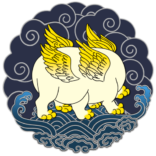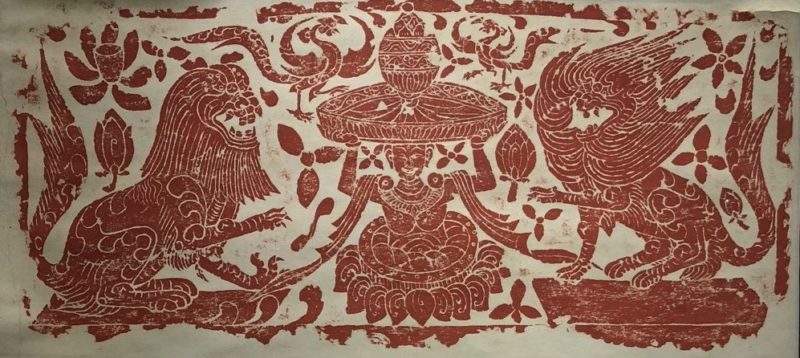This article is for educational purposes only and is not intended to replace the advice of your doctor or other health care provider. We encourage you to discuss any questions or concerns you may have with your provider.
————————————————————————
Acute viral hepatitis can be triggered by at least 5 specific types of viruses: HAV, HBV, HCV, HDV, HEV. Certain drugs, toxins, alcohol, and certain diseases (such as autoimmune diseases) may also cause the condition. There are no biomedical medications to treat hepatitis A, acute hepatitis B and acute hepatitis C.
The most common initial symptoms of acute hepatitis include low-grade fever, malaise, right upper quadrant pain, nausea & vomiting, dark urine, joint pain (Shaoyang symptoms), and fatigue, anorexia (loss of appetite), diarrhea, abdominal pain, clay-colored stools (Taiyin symptoms). This is a manifestation of Wood overacting on Earth. If infection has worsened but body temperature does not increase accordingly, it means the person’s Taiyin Qi may be compromised, or Shaoyin Blood is depleted.
Jaundice often develops, typically after the above symptoms begin to resolve. The type of jaundice that acute hepatitis patients typically present is the Yang Wood type: bright yellow/orange skin and sclera, and it develops rapidly (Wood moves fast).
Patients with strong Shaoyang constitution tend to develop acute viral hepatitis and fulminant hepatic failure (acute liver failure). People with typical Taiyin constitution tend to develop chronic hepatitis. Fulminant hepatic failure has become more and more rare, as we have progressed into a Yin era globally. Most patients with acute hepatitis present with little or no symptoms because there is a significant lack of Yang Qi both on the macrocosmic and microcosmic levels.
Injury to the liver, whether acute or chronic, eventually results in an increase in serum concentrations of aminotransferases.1 Patients with a marked increase in aminotransferase levels (>10 times the upper reference limit) typically have acute hepatic injury, but of course there are exceptions (5–10 times the upper reference limit, at 200 IU/L for AST [sensitivity 91%, specificity 95%] and 300 IU/L for ALT [sensitivity 96%, specificity 94%]).2 The academic attribution of cause and severity of acute damage on the basis of the magnitude of enzyme elevation may sometimes be misleading. And the degree of elevation varies during the course of injury and depends on when the enzyme levels were tested.1
The severe acute symptoms such as jaundice, delirium and mania can develop very rapidly, typically within two or three days, even in patients with normal B-mode ultrasound result and normal bilirubin serum levels. Delirium and mania in this case are caused by toxin accumulation in the blood and failure to transport into the large intestines. In this case, it is very crucial to unblock the bowels to expel the toxins such as bilirubin.
Since the disease is at the Shaoyang layer, Da Chai Hu Tang can be used to transport the toxins from Shaoyang to the large intestines (Yangming Fu organ). At the same time, heat toxin in the Blood (bilirubin) has to be expelled as soon as possible otherwise it will lead to severe Blood stagnation.
There are two famous formulas in Shang Han Lun that indicate symptoms of delirium and mania due to severe Blood stagnation. One is Tao He Cheng Qi Tang, the other one is Di Dang Tang. Since there is a danger of upper and/or lower GI tract bleeding in fulminant hepatic failure patients, it is inappropriate to use Tao He Cheng Qi Tang because it contains the blood-moving herb, Tao Ren (peach kernel), which will worsen the condition. We should also avoid using other blood-moving herbs such as Dang Gui, Chuan Xiong, Hong Hua, etc.
However, blood-moving herbs such as Shui Zhi, Meng Chong included in Di Dang Tang can be used, because they do not worsen the bleeding. If heat signs are present, Mu Dan Pi, Shao Yao can be added to the formula.
Toxic heat in the Blood tends to ascend into the Heart, disturbing the Heart Shen (spirit) and causing delirium and manic behaviors. This is why Di Dang Tang includes the powerful herb Da Huang to clear the toxic heat in the blood.
- Liver enzyme alteration: a guide for clinicians (nih.gov)
- Computer analysis of liver function tests and their interrelationships in 347 cases of viral hepatitis. P Rozen, R J Korn, H J Zimmerman. Isr J Med Sci, Jan-Feb 1970;6(1):67-79.

